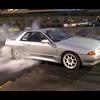Clunking Sound At Front End!
Announcements
-
Similar Content
-
Latest Posts
-
I have done a lot of research before posting here and on gtruk forum. couldn't find anything. I have my gauges all part except the needle itself. the needle has a extremely small hole in the center, but the shaft going to the needle is extremely small and appears to have nothing to index it either. doesn't seem strong enough to simple pry or pull without damaging something. Already tried the old spoon trick on a extra triple meter I have from a gtt, but no luck. the center cap comes off easily but the hole in the meter face plate aren't big enough to get over the needle itself. figured this would be my best place to find someone who might have actually removed theirs. wonder if there is some type of small pin press tool to push the pin in while pulling the needle base off.
-
Ok...its taking me long enough to finally do this. Feck financial security...heart disease will get me soon enough anyway So welcome to the garage..."Clem" Belsil80 has been running a 370Z in Super TT series. So after entering with him in last years Winton 300 i figured I need my own car. Seems SAU Vic race cars need to be yellow....{tick} Reckon with enough motor i will be able to make up for the lack of talent and stay ahead of the 370Z... but the LS powered S13 and E36s are a ways up the road Aim is to have a car that doesnt stop or turn but has a bit of shed built motor with jam...maybe some cream First step is getting this ex drift car log booked I am keeping faithful silver car. As the road-club car gets upgrades the race car wil get the sloppy seconds
-
Assuming that they will come off without damage at all.... i would have thought just pull straight up off the spindle with a something or other than can reach underneath. Have you searched for youtube vids of people doing similar on R34s or any other Nissan from the same vintage? They should be the same technique, in all likelihhood.
-
Keeping in mind that sandblasting is really aggressive on softer metals like cast alloy, and you can do damage that you might regret. For trash wheels, not a problem. For wheels with value/scarcity issues, etc.... perhaps a less aggressive media is a better choice?
-
Don't get all high and mighty. Experienced spanner wielders know exactly what effort is required to release an Oof.
-




Recommended Posts
Create an account or sign in to comment
You need to be a member in order to leave a comment
Create an account
Sign up for a new account in our community. It's easy!
Register a new accountSign in
Already have an account? Sign in here.
Sign In Now